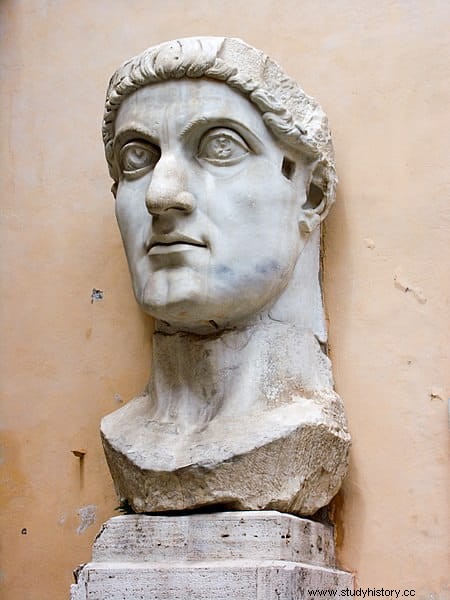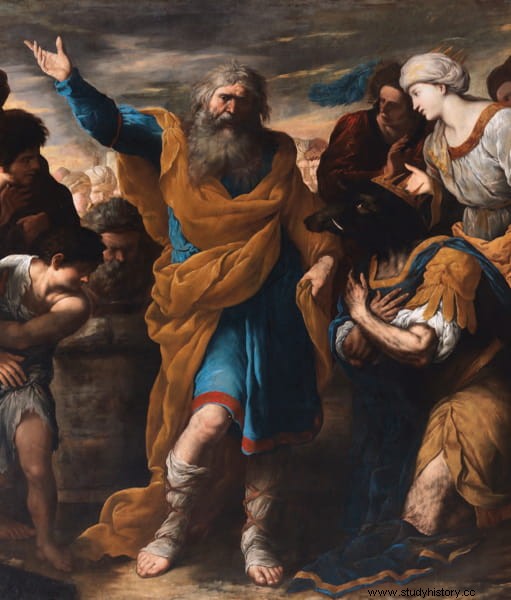It is curious that the oldest cathedral in Christianity does not present the simple and original beauty of the Romanesque, the exquisite and archetypal majesty of the Gothic, the classical Renaissance evocation or the overwhelming magnificence of the Baroque. It is a question of a building that is difficult to classify due to its very early age and, above all, due to the subsequent reforms. I am referring to the Cathedral of Ejmiatsin, the holy city of Armenia and seat of the Gregorian Apostolic Church.
This church was built between 301 and 303 by order of Gregory I the Illuminator after he had a vision:that of Christ descending from heaven and hitting the ground with a golden hammer, thus indicating the place where the building should be erected.
Although in reality there is not just one but a whole complex formed by the cathedral itself (whose basic external appearance corresponds to the reforms experienced in the 17th century, but which inside preserves splendid examples of Armenian sculpture and relics as bizarre as wood from the Ark of Noah or the spear of Longinus) and the churches of Santa Ripissima, Santa Gayané, Choghagat and Astvatsatsín (all of them from the 7th century), plus a museum and a seminary. The entire complex is a World Heritage Site.

It is common belief that the first state to proclaim Christianity as the official religion was Rome, which was done by Constantine the Great in the year 313 through the Edict of Milan. Obviously, even when it began to break down into successive tetrarchies, triarchies, and diarchies, the Roman Empire was reunified by that emperor and remained the head of the world.
However, Constantine did not make the new religion official that year, the seventh of his reign (and he only converted when he was on his deathbed), but limited himself to legalizing what was already a reality:the spread and generalization of the Christian faith among Roman citizens.

The fact is that to find the first country that made Christianity the official religion, you have to deviate geographically to the east, focus your eyes on Armenia and go back a bit chronologically, because the exact date was 301 AD. That year King Tridates III was baptized by Gregory I, considered the founder and patron saint of the aforementioned Armenian Apostolic Gregorian Church; the oldest in the world, then.
That is to say, the new faith became official twelve years before Constantine signed the Edict of Milan and almost eight decades before his assimilation to the Imperial State by Theodosius I in 380.
According to tradition, this area, located south of the Caucasus and which had once been a place of fundamental importance in history as it was the land of the Hittites, Mitannians, Phrygians and Seleucids, among others, with important dynasties such as the Orontid or the Artaxid , and which reached its maximum splendor under the government of Tigranes the Great before falling under the influence of the Parthians and Romans; That area, I say, was evangelized by the apostles Judas Tadeo and Bartolomé, who spread the word of Christ with rapid success and whose work was continued by patriarchs such as Zemendós, Atrnerséh, Mushé, Shavarsh, Levondios or Meruyán.
In this context appears Gregorio, a descendant of a family of the Parthian nobility -from the Arsacid dynasty, to be exact, the one that succeeded the Artaxida- who had fallen into disgrace after assassinating Chosroes II. He was educated in Caesarea (present-day Kayseri, in Cappadocia) by a Christian aristocrat named Euthalius, to whom he had been entrusted at the wish of his mother Okohe, who was a Christian and wished to train her son in that faith.
Despite the fact that he had a deep apostolic vocation, Gregorio married a co-religionist named Miriam and even had two children, but seven years later he decided to give up his family life and launch himself into preaching.

Until then he had remained unnoticed and thus safe from the vengeance of Tridates III, the son of Khosrow, who had succeeded his ill-fated father on the throne of Armenia. But when he came out into public life he was soon located and taken prisoner, partly to make him pay for his father's crime and partly for refusing to make a floral offering in honor of Anahit, the goddess of fertility and the most important of the pantheon. Armenian next to Mitra.
After suffering torture and being about to be executed, he spent fourteen years locked in an underground dungeon - little more than a tomb - at the foot of Mount Ararat; a zulo that was only opened to feed him and where the Khor Virap monastery stands today.
However, the passage of time turned out to be worse for his captor, who, after murdering a group of nuns who refused to have sex with him, contracted a strange disease. The history of the Armenians and the History of Tridates , works by his chronicler and secretary Agathangelos in the 5th century and the main source for knowing the facts, narrates that the king began to behave like a wild animal -a boar, he says-, living in the forest without anyone being able to return him to palace; some researchers suggest that he suffered from clinical lycanthropy.

The fact is that his sister Khosrovidukht had a dream in which the man locked in the dungeon of Ararat cured Tridates and, desperate, she decided to try. She had him released, facilitated his recovery, and brought him before the feral sovereign. Forgetting her enmity, Gregory ordered that prayers be made to God for his healing and, indeed, shortly afterwards he succeeded in bringing him back to sanity.
Grateful, the monarch not only forgave him but declared Christianity official and state, being baptized in the year 301 and granting Gregory the position of Patriarch of Armenia the following year.
Growing old, Gregory gave the job to his son Aristaces and retired to a hermit life in a cave on Mount Sebuh, where he died in 330. His remains were macabrely chopped up to be distributed as relics in various localities (one hand is in the Ejmiatsin Cathedral), but behind him he left a strong and rich church thanks to the fact that the domains of the pagan temples passed to his property.
Moreover, as in so many other places, there was an intense work of syncretism and that is why that Anahit that brought Gregorio so much misfortune was later assimilated to the Virgin Mary, many Armenian women today bearing that name without knowing that, paradoxically, it comes from a pagan deity.
